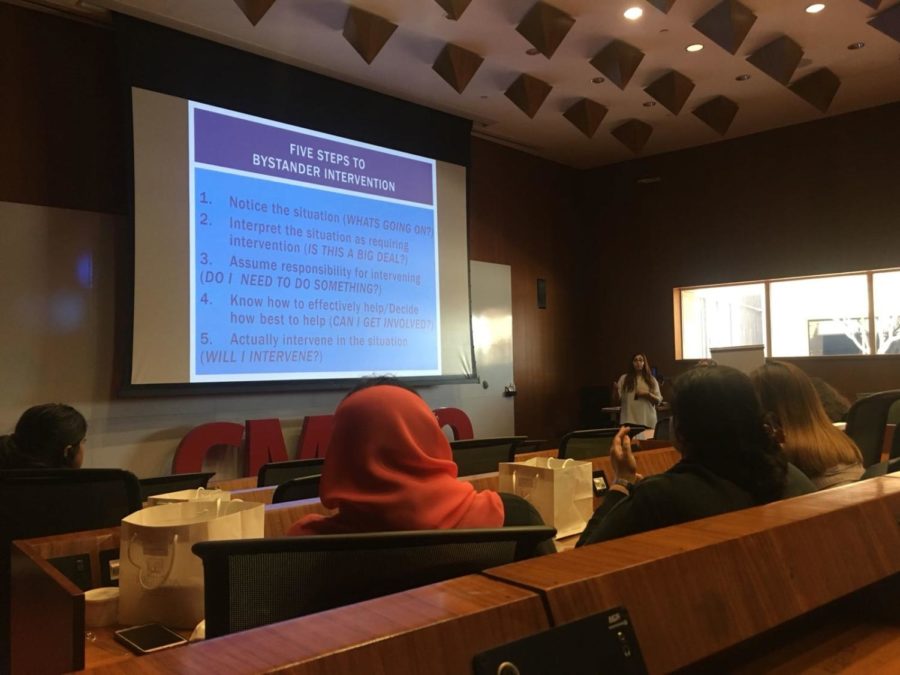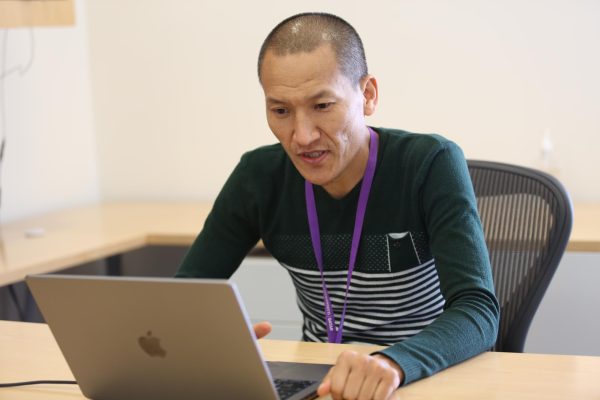How can you be a successful bystander?
People must have more confidence in intervening in violent, non-violent, emergency and non-emergency situations, said Patti Collins, the health and wellness counselor at Northwestern University in Qatar. She spoke at a bystander intervention event at Carnegie Mellon University in Qatar on Tuesday, March 26, alongside Dalia Atef Rehal, the director of student life at CMU-Q.
Examples of violent situations include two individuals fighting physically, while non-violent events include people verbally fighting about a disagreement. Emergency situations tend to include instances where it is a life or death situation, meaning someone can be physically or mentally hurt.
According to Rehal, there are three main reasons people do not take action. These include the fear of being embarrassed, social ambiguity (difficulty determining whether or not it is a situation where you need to intervene), and the diffusion of responsibility.
For these reasons, it is valuable to receive training, Collins said.
She explained the importance of creating a community that cares and makes situations safer for its members.
“Most recently, [research states that] bystander intervention training on college campuses lowers the rates of sexual assaults on college campuses,” said Collins.
“There are different actions for different people,” said Rehal. “But at least they’re taking action.”
Sometimes individuals intervene directly by addressing the situation, while others intervene silently. Collins gave the example of the snack man. The snack man is someone who witnessed two people violently fighting. The man was eating crisps. Upon his observation, the man stood between the two people, while eating his crisps. The two individuals eventually stopped reacting violently to one another and the situation reduced in severity.
Intervention training not only focuses on intervening within your local community but the world at large. People in marginalized populations need others to stand up for them, according to Collins.
Here are the five steps to bystander intervention:
- Notice the situation: what is going on?
- Interpret the situation as requiring intervention: Is this a big deal?
- Assume responsibility for intervening: Do I need to do something?
- Know how to effectively help and decide how best to help: Can I get involved?
- Intervene in the situation
Here are the four ways you can intervene (also known as the 4D’s):
- Distract: This way carries the lowest risk and involves distracting the perpetrator from the current undesired behavior. This could be as simple as standing between two people wanting to fight, blocking any physical harm from either side or simply changing the subject of conversation.
- Direct: use assertive language and deal with the situation directly.
- Delegate: Share responsibility with others around you who may be more helpful.
- Delay: Delay getting involved until you recognize if it is worth intervening or not.
If you are unable to intervene directly, here are some sources you can contact to help:
- Qatar Foundation for Social Work (QFSW) Hotline: 919
- Your Campus Counseling Office
- Your Division of Student Affairs
- Title IX Coordinators at each campus
- https://www.circleof6app.com or NU Help (NU-Q)
- Emergency: 999 or 4454-0999













